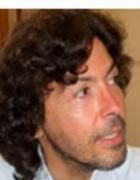
António Mauricio
Member of the working group - Associate Professor/Researcher at CEPGIST/IST-UTL
Departamento de Engenharia Civil, Arquitectura e Georecursos, Instituto Superior Técnico, Laboratório de Mineralogia e Petrologia, Pavilhão de Minas, Piso 3, Av. Rovisco Pais, 1, 1049-001 Lisboa, Portugal
António Maurício is a Geoscience Scientist and Professor with about 31 years of experience (18 of post-doctoral activity) in several fields of investigation, mainly involving Water-Rock Interaction in Meteoric-Environments; Cultural Heritage-Environmentally-induced natural materials decay diagnosis and control; 2D Image and Data Analysis and more recently X-Ray Microtomography (3D microscopy).
António Maurício was Mining Engineer-ISTgraduated (5 years) in 1982; post-graduated in Mining MsE - Mineralurgy and Mining Planning -IST(3 years) in 1986, and PhD. Mining Engineering - IST in 1994 from Technical University of Lisbon – IST (Portugal). As an Associate Professor with tenure since 2001 at Lisbon Superior Technical Institute (IST) and member of the Centre for Petrology and Geochemistry (CEPGIST) he is involved in different research R&D projects (namely DECASTONE – dealing with water-rock interaction geochemistry, monument stone decay studies and geotechnical applications). He is co-responsible for the Laboratory of Mineralogy and Petrology ofISTbeing also a member of theISTScientific Platforms of Environment and Nano-materials.
He supervised and was member of jury of students in integrated Masters, Masters students (now 2nd cycle) and PhD students (current 3rd cycle), in national and of foreign universities. He tought fundamental disciplines (Geology, Crystallography, Mineralogy, Petrology, Geochemistry, Applied Geology), which are transversal to different engineering courses (Civil, Mining, Environmental, Territory).
He has collaborated in more than 30 R&D projects, using analytical micro-destructive and non-destructive techniques such as Optical Microscopy, 2D Image and Data Processing, Analysis and Modelling methods and more recently non-destructive X-ray micro-tomography (3D microscopy) applications to complex natural and artificial materials e.g.: virtual modelling of polychrome artefacts, ...); biological materials study and characterization (e.g. bone, kidney and salivary calculus, cork,…); building materials characterization (e.g. lightweight aggregates, mortars, natural stone...) and building materials decay problems diagnosis, evaluation and control.
He is author of more than 70 publications in peer-reviewed scientific journals, proceeding of conferences, books, etc.
